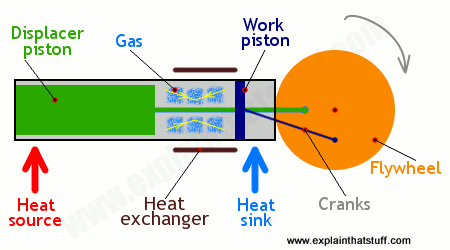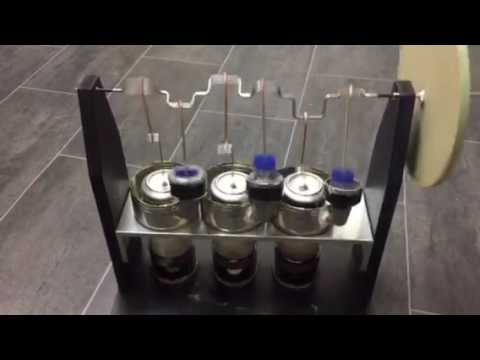In Thermo and Heat Transfer we talked a lot about sterling engines and how they operate. I have to give Professor Knutsen a shout out as he is the one who was fascinated with these little machines and got me hooked on them. I always wanted to make one but never got around to it.

These “motors” operate off of a constant changing heat differential which transfers kinetic energy in heat to useful mechanical work (although not much). I hope to make a functional sterling engine that will operate off of a small flame. I have seen some awesome unique designs. Some people have made 4 cylinder sterling engines that are synced with a crank shaft like the linked video below. I am not sure what design exactly I want to make but i think a 4 cylinder mechanism would be super cool.
I want to give this mechanism some sort of “mechanical” or “industrial” aesthetic. Im not sure yet if I should try to machine some parts, or utilize empty cans and other household materials as others have. Any input would be awesome!


2 Comments. Leave new
Nate,
Awesome idea! I have to say this seems like a complex project but I think you have a solid idea of how you are going to achieve your design goals, and I am looking forward to seeing the finished project! Is there some kind of correlation of the strength of the flame to the RPM of your sterling engine? What do you think you might use the engine for?
Zach,
Thanks man. Yes – there is a correlation. The engine runs off of a heat differential between the bottom of the piston ( flame ) and the top (open air). The hotter the flame the greater the temp difference thus a greater driving force.
I am still undecided in terms of what I want to use the engine to do. Part of me just wants to use it as a desk toy. However one idea I had was to use the rotational work as a tool for spooling line onto a fishing reel. These electric line spoolers operate at high frequency and low torque – perfect for the sterling motor. Not sure how it would work but could be a cool idea.